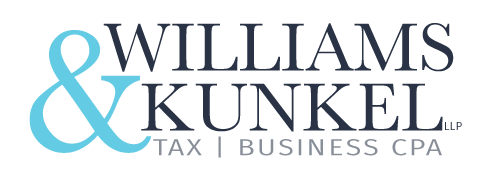While it can be tempting to splurge money on something, saving some of it could be a smarter move over the long run. Here some ways that taxpayers with a household income of less than $75,000 can put that refund to good use.
1. Build up your rainy day fund
Experts recommend having at least six months’ worth of savings set aside. That way if you lose your job or encounter an unexpected expense you can cover the cost without turning to credit cards.
Three out of five Americans experienced an unexpected expense last year, according to a January survey by Bankrate.
2. Pay down high-interest debt
If you’re able to knock out high-interest debt, you’ll see an increased cash flow going forward.
Even if you have high-interest debt, you might also want to set aside a portion of your refund for savings.
We recommend doing both together. Bring debt down also but get into the habit of saving for the future.”
3. Put it toward retirement savings
You should consider contributing enough to your workplace retirement account to get the company match. Many 401(k) accounts also allow you to borrow against them if you need the cash later.
Companies often offer both a traditional 401(k) and a Roth 401(k) option. In the traditional accounts, you’ll get to write off your contribution now but will have to pay taxes when you pull money out in retirement. The opposite is true for a Roth 401(k): You’ll have to pay taxes on 401(k) contributions now, but the money will grow tax-free and you can make tax-free withdrawals in retirement.
If you don’t have access to a 401(k), or don’t like the investment options at your company, you should consider an individual retirement account (IRA). Contributions to a traditional IRA may be fully or partially deductible, but you will be taxed when you withdraw the funds. With a Roth IRA, you can’t deduct your contributions on your taxes. Withdrawals that follow Roth IRA regulations, though, are tax free.
4. Put it in an health savings account
If you have a high-deductible health insurance plan, which have become more common in recent years, you likely also have access to a health savings account (HSA). These accounts allow you to put money away for both current and future out-of-pocket health care expenses. Unlike a flex spending account, HSA funds roll over and accumulate year over year if you don’t use them.
This year, individuals can contribute up to $3,450 in an HSA and families can save up to $6,900 in one. Those age 55 and older can put an extra $1,000 into their HSA.
5. Open or add to a 529 account
If you’re planning to help your children pay for college, putting money into a 529 plan is a great place to start. The money that you save for college will grow tax-free and you won’t pay taxes on withdrawals as long as you use them for qualified education expenses.
There are no immediate federal tax benefits for 529 contributions, but many states offer a deduction on state taxes for direct-sold plans, according to the SEC.
Call Williams & Kunkel CPA today in Flower Mound at 972-446-1040 to have a chat about your small business tax health.
In addition, you can connect with us to receive updates throughout the business week by following us on Twitter or LinkedIn or liking us on Facebook.
Source: Chase

